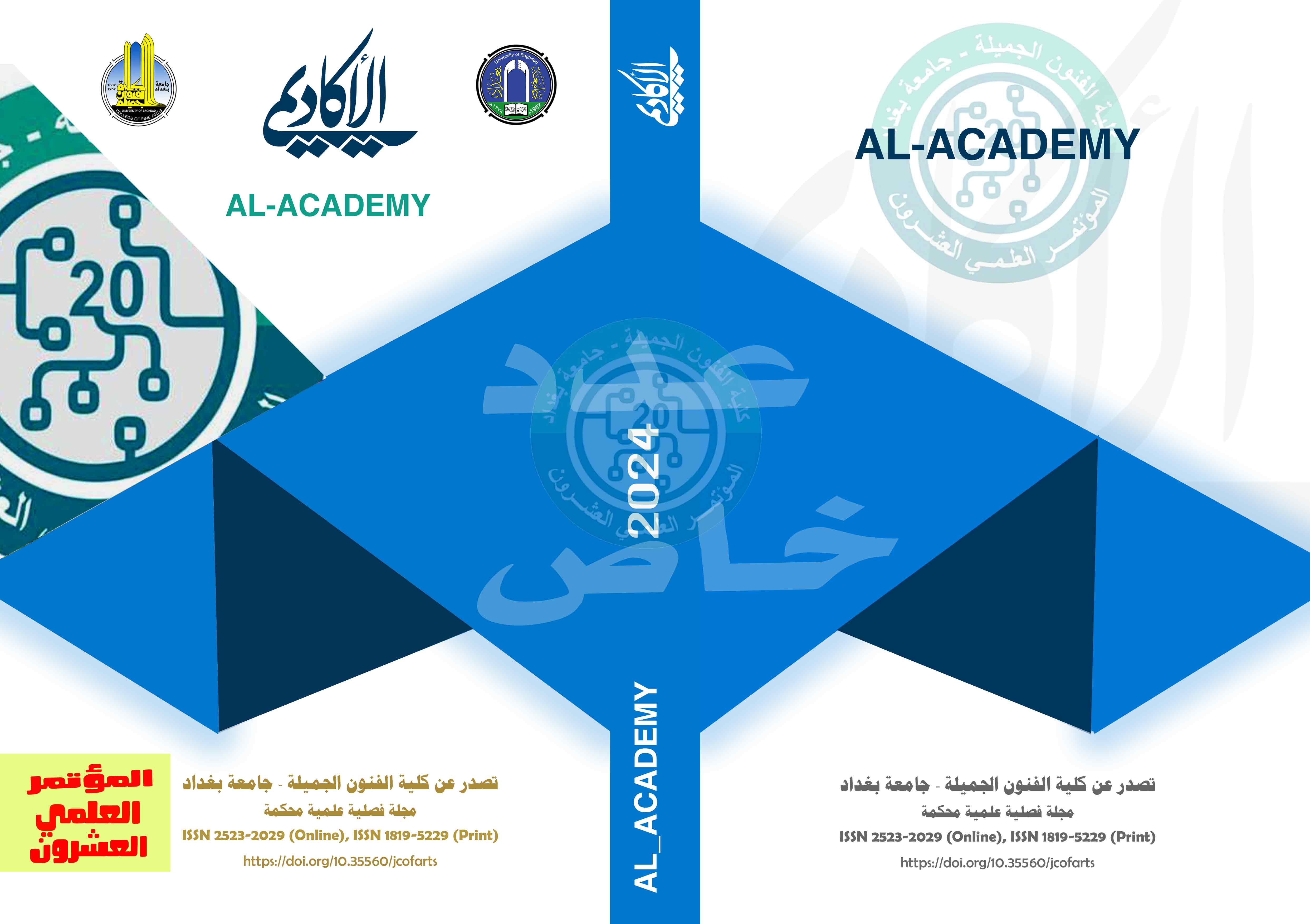Implementations of Artificial Intelligence Technology in Teaching Arts: Omani Tradition Storytelling as a model
DOI:
https://doi.org/10.35560/jcofarts1431Keywords:
Artificial Intelligence Technology Omani Tradition StorytellingAbstract
Modern technology is a powerful tool in the teaching process for different stages of education, as it provides a set of benefits that enhance the teaching and learning processes as it provides digital reading platforms and smart applications, and the opportunity to have immediate access to a wide range of stories and anecdotes, which encourages the diversity of children’s reading and broadens their horizons. cultural; There is no doubt that the availability of digital stories for children enables direct interaction with texts and cognitive content, as this type of stories combines audio, animation, and interactions that enhance the pleasure of reading and make children feel greater participation in the world of the story and a deep understanding with a broad imagination that leads to innovation and creativity. The current research project aims to take advantage of the capabilities of artificial intelligence technology in drawing some Omani folk stories through the use of the descriptive analytical approach and the quasi-experimental approach as effective means of transferring stories and anecdotes to the world of children, while providing opportunities for digital reading platforms and smart phone applications for children and access to... Rich and diverse content of Omani intangible heritage stories in modern, contemporary forms with ease. The project to digitize Omani popular stories in digital form is considered one of the basic outputs of this project, with opportunities to apply them in the educational aspect in ways characterized by creativity and innovation through applications of artificial intelligence technology
References
James, Annie. (2010). Animation and language development. Children and Pupils Journal, 53(4).
Morris, J. (2008). The role of picture books and animation in teaching reading. Arab Journal of Education, 28(3).
Al-Nabalawi, Aida Fouad. (2016). Omani folk tales and their social and cultural significance: Dra Anthropological year. Journal of Arts and Social Sciences - Sultan Qaboos University, Volume 3, Issue 2, pp. 347-371.
Hart, Stuart. (2017). Animation and Education: A Teacher's Guide. Dar Al Hadara for Publishing and Distribution.
Hudhali, Fawaz, and Sheikh, Hajira (2022). Applications of artificial intelligence in the field of design and its relationship to creativity and innovation as a modern trend - the Japanese experience as an example -. Journal of Legal and Economic Studies، 5(1)، 845-863. https://www.asjp.cerist.dz/en/downArticle/649/5/1/191603
Badawi, M. (2014). Arabic Children's Literature: Reality and Challenges, Journal of Humanities and Social Sciences, 41(1), 128-141.
Beckett, S., & McKechnie, L. (2017). Understanding Children's Literature. Routledge.
Bellaiche, Lucas, Shahi, Rohin, Turpin, Martin, Ragnhildstveit, Anya, Sprockett, Shawn, Barr,
Chung, S. K. (2007). Art education technology: Digital storytelling. Art Education, 60(2), 17-22.
Jaruga-Rozdolska, A. (2022). Artificial intelligence as part of future practices in the architect’s work: MidJourney generative tool as part of a process of creating an architectural form. Architetus, 3(71), 97-104. DOI: 10.37190/arc220310
Graylin, A. W. (2019). Virtual Reality: A New Storytelling Medium. In Augmented Reality, Virtual Reality, and Computer Graphics (pp. 107-119). Springer.
He, Caixia, Sun, Baoguo (2021). Application of artificial intelligence technology in computer aided art teaching. Computer-Aided Design and Applications, 18(S4), 118–129. https://doi.org/10.14733/cadaps.2021.s4.118-129
Kong, Fanwen (2020). Application of artificial intelligence in modern art teaching. International Journal of Emerging Technologies in Learning (iJET), 15(13), 238. https://doi.org/10.3991/ijet.v15i13.15351
Maye, L., Bouchard, D., Avram, G. & Ciolfi, L. (2017). Supporting Cultural Heritage Professionals Adopting and Shaping Interactive Technologies in Museums. Spaces & Surfaces, June 10-14, 221-232. https://dl.acm.org/doi/pdf/10.1145/3064663.3064753
Murphy, R. (2019). Introduction to ai robotics (Second, Ser. Intelligent robotics and autonomous agents). MIT Press.
OECD. (2023). Recommendation of the council on artificial intelligence. file:///C:/Users/algha/Downloads/OECD-LEGAL-0449-en.pdf
Pilkey, D. (2002). The adventures of Super Diaper Baby. New York, NY: Blue Sky.
Wolf, S. (2015). The Handheld: Researching the Impact of Mobile Technologies on Children’s Literature. Children's Literature in Education, 46(3), 291-302.
Tomasik, B. (2017). Artificial Intelligence and its implications for future suffering. Foundational Research Institute: Basel, Switzerland.
UNICEF. (2021). Policy guidance on AI for children. https://www.unicef.org/globalinsight/media/2356/file/UNICEF-Global-Insight-policy-guidance-AI-children-2.0-2021.pdf
Yang, R. (2020). Artificial Intelligence-Based Strategies for Improving the Teaching Effect of Art Major Courses in Colleges. International Journal of Emerging Technologies in Learning (iJET), 15(22), 146-160. Kassel, Germany: International Journal of Emerging Technology in Learning. Retrieved May 5, 2022 from https://www.learntechlib.org/p/218414/.














